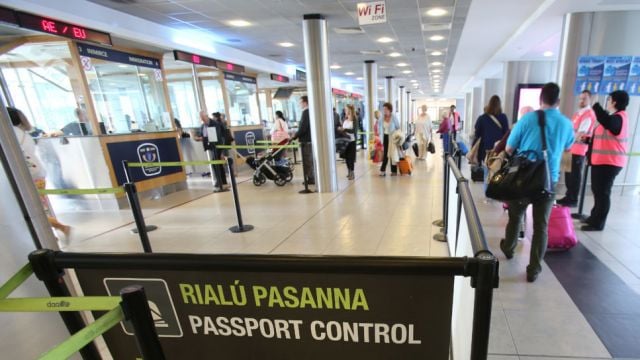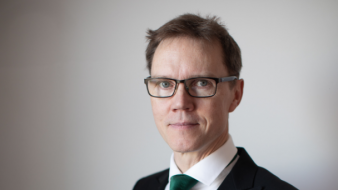Ireland's rapidly growing population is one of the driving forces behind the key social issues facing the country.
Housing, healthcare and education are all impacted by the rising number of people living in the Republic.
The country has experienced a surge in migration numbers in the last two years, in large part due to tens of thousands of Ukrainian refugees.
There has also been an increase in the number of asylum seekers arriving from elsewhere in the world.
This, coupled with pre-existing housing shortages, has placed unprecedented strain on State accommodation provision, leading to tensions and disputes in some areas over plans to repurpose hotels and other buildings into facilities for international protection applicants.
Here, we provide a breakdown of the latest facts and figures related to migration in Ireland.
The most recent population figures from the Central Statistics Office (CSO) showed an increase of close to 100,000 in the year to April 2024, bringing the total number of people living in the State to 5.38 million.
Population growth was helped by 79,300 more people immigrating than emigrating in that period, according to the CSO.
The number of immigrants in the 12 months to April 2024, at 149,200, was the highest since the year to April 2007.
Of those immigrants, 30,000 were returning Irish citizens, 27,000 were EU citizens and 5,400 were UK citizens, while the remaining 86,800 immigrants were citizens of other countries, including Ukraine.
Meanwhile, more than 69,000 people emigrated in the same period, an increase of 5,000 when compared to the same period in 2023 and the highest emigration figure since 2015.
In line with trends across Europe, the number of people arriving in the State to claim asylum has soared in recent years to reach record levels.
There was a 415 per cent increase in the number of applications in 2022 compared to 2021, and a 186 per cent increase from 2019.
In 2022, there were 13,651 applications for international protection, while 2023 saw 13,277 applications.
Those numbers have already been exceeded before this year has finished, with more than 14,037 applications made by the end of August.
In August alone, 1,692 people made applications for asylum, up from 1,160 in August 2023.
At the start of the year Minister for Integration Roderic O’Gorman predicted an annual total of 15,000 asylum seekers arriving would be the “new normal” the State could expect.
Between January and the end of October this year, more than 15,000 people arrived in the Republic, compared to about 9,200 during the same period in 2023.
About 35 per cent of these arrivals are men who travelled alone, but the numbers also include children, couples, women and single parents.
This year’s figures are driven by a fourfold increase in people from Nigeria seeking asylum.
In 2023, a total of 2,084 Nigerians tried to claim asylum; this year the figure up until August is 3,325. Nigeria accounts for almost 24 per cent of all asylum seekers to the State this year, by far the greatest number from a single country.
All of this has put pressure on the already strained accommodation system for international protection applicants.
The system is run by the International Protection Accommodation Services (IPAS), part of the Department of Integration. IPAS manages reception centres, emergency accommodation, the Citywest Transit Hub and tented accommodation.
The number of people living in the IPAS system has more than tripled since 2021, when about 7,000 people were being accommodated. Now more than 32,000 people are in State-provided shelter.
This sharp rise amid the ongoing housing crisis led the Government to say last year it could no longer provide accommodation to all asylum seekers. In practice, this means men without children are not prioritised for accommodation.
Some of these men ended up living on the streets. In May more than 200 asylum seekers who had been living in tents outside the International Protection Office in Dublin were moved from the area to facilities at Citywest and Crooksling in Co Dublin.
The country has also seen a spike in the number of arson attacks on buildings rumoured or earmarked to provide accommodation for people seeking international protection.
Reception centres and emergency accommodation are located in all parts of the State, with asylum seekers living in every county.
Galway City is the local authority with the most asylum seekers relative to its population, at about 2.1 per cent, followed by South Dublin (1.4 per cent) and Donegal (1.2 per cent). Kilkenny and Cavan have the fewest housed asylum seekers as a percentage of their populations (0.2 per cent).
In contrast, the number of weekly arrivals from Ukraine has fallen significantly since the beginning of this year.
It comes after the Government slashed the allowances for newly arrived Ukrainian refugees, dropping from €220 to €38.80 per week, the same rate that asylum applicants receive.
New arrivals from Ukraine now also have a 90-day limit on the time they can remain housed by the State.
More than 100,000 Ukrainians have arrived in Ireland since the onset of the Russian invasion in February 2022.
Many of them have settled in rural and western areas of the country. Kerry, Leitrim, Donegal and Clare are the counties with the highest share of Ukrainian refugees relative to the population.
According to Central Statistics Office data based on PPSN registrations, there are 12 Ukrainian refugees per 100 residents in Ennistymon, Co Clare.
Ireland’s rising population presents significant economic and social challenges, particularly the need to construct more housing and expand public services to accommodate growing numbers.
Earlier this year Taoiseach Simon Harris said inward migration was a “good thing” but warned there was a need to build various systems to respond to the population growth.
“There’s no doubt the Government that I lead will now need to do a better job in terms of forward planning, preparing for population growth, wondering what that means for public services, what that means for investment, what that means for staffing levels.
“But we need to be very clear that actually the growth that we’re seeing in our population, much of that growth are actually people coming to assist our country – either Irish people coming back home, maybe after a number of years abroad, maybe coming back home to a job or to have a family or to care for a relative, and also people coming to Ireland to work in job vacancies that haven’t been able to be filled within Ireland.”







